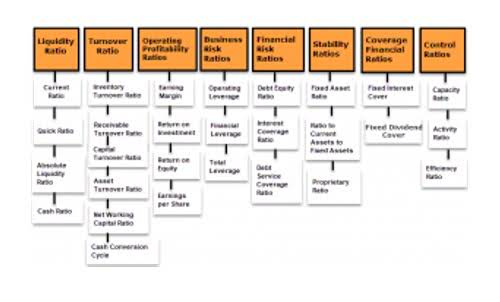This a test block.
Accounting Overview, Principles, Examples, Importance, & Facts

GAAP (Generally Accepted Accounting Principles) and IFRS (International Financial Reporting Standards). The primary output of the financial accounting system is the annual financial statement. The three most common components of a financial statement are the balance sheet, the income statement, and the statement of cash flows. In some jurisdictions, summary financial statements are available (or may be required) on a quarterly basis.
What is Accounting?
- In addition, financial statements disclose details concerning economic resources and the claims to those resources.
- After you enter a transaction and categorize it under an account, your accounting software will create a journal entry behind the scenes.
- To illustrate double-entry accounting, imagine a business sending an invoice to one of its clients.
- Analysts, managers, business owners, and accountants use this information to determine what their products should cost.
- Cost accounting focuses on a detailed break-up of costs for effective cost control.
- Essentially, bookkeeping serves as the foundation, while Accounting uses that foundation to provide strategic guidance and ensure financial transparency.
- Accounting software does a lot of the heavy lifting (such as keeping track of debits and credits) for you.
It sounds simple, but in reality, a lot of behind-the-scenes work goes into accurately reporting on a business’s financial state. The financial statements that summarize a large company’s operations, financial position, and cash flows over a particular period are concise and consolidated reports based on thousands of individual financial transactions. It prepares accurate financial statements, like cash flow, balance sheets, and income statements, to inform external stakeholders, such as investors and regulators. Ever wondered how businesses track financial health or ensure regulation compliance? The answer lies in Accounting—a systematic process of recording, analysing, and reporting financial transactions. This blog unravels What is Accounting, its diverse types, and its critical role in decision-making, ensuring you’re equipped with insights into this essential practice.

Financial Accounting
Accounting helps you gauge where your small business stands financially, what it can afford at any given time, and where its money is coming from and going. In addition to this financial overview, proper accounting practices prepare your business to file taxes and produce financial statements needed for potential investors or business loan applications. Accounting is the profession of tracking the assets or what is accounting cash flows of a company or other large organization, and recording how its finances spent.
What Is Accounting?
Accounting statements are regularly used by management, investors, and tax authorities to get a clear picture of how well an organization is managing its finances. For a small business, accounting involves tracking money flow in various forms, including operating expenses (e.g., marketing, utilities, rent), cost of goods sold, accounts receivable and sales. It also takes into account liabilities, such as accounts payable, business loans and taxes, and the value of your assets, such as cash and inventory. Because their reports are regularly scrutinized by oversight agencies, accountants are required to adhere to a uniform set of accounting standards. These rules specify how to record income, expenditures, assets, and losses, so that auditors have an objective view of the organization’s financial health. To illustrate double-entry accounting, imagine a business sending an invoice to one of its clients.


Let’s say a client just paid their invoice online, or money was withdrawn from your checking account to pay a utility bill. Most business owners opt for small-business accounting software to help automate the process and reduce the likelihood of error. Without accounting, investors would be unable to rely on timely or accurate financial information, and companies’ executives would lack the transparency needed to manage risks or plan projects. Regulators also rely on accountants for critical functions such as providing auditors’ opinions on companies’ annual 10-K filings. In short, although accounting is sometimes overlooked, it is absolutely critical for the smooth functioning of modern finance. These rules are outlined by GAAP and IFRS, are required by public companies, and are mainly used by larger companies.
- Aspiring CPAs are expected to have a bachelor’s degree, more than two years of public accounting work experience, pass all four parts of the CPA exam and meet additional state-specific qualifications if required.
- Information is relevant to the extent that it can potentially alter a decision.
- By imparting insights into profitability, cash flow, and economic stability, Accounting empowers businesses to strategise, grow, and remain compliant with legal requirements.
- This is the act of tracking and reporting income and expenses related to your company’s taxes.
- Specialties include general financial planning, career development, lending, retirement, tax preparation, and credit.
These reports are usually sent to all investors and others outside the management group. Some companies post their financial statements on the Internet, and in the United States the financial reports for public corporations can be obtained from the Securities retained earnings balance sheet and Exchange Commission (SEC) through its website. The preparation of these reports falls within a branch of accounting known as financial accounting. Accountants help businesses maintain accurate and timely records of their finances.

- Tax professionals include CPAs, attorneys, accountants, brokers, financial planners and more.
- Tracks the financial performance of specific projects, ensuring they remain within budget and meet financial objectives.
- Accounting standards are formal guidelines ensuring consistency, transparency, and legal compliance in financial reporting, fostering trust among stakeholders and aiding informed decisions.
- These tools enable the business owner to monitor cash flow, evaluate business performance, and make informed financial decisions.
- You can outsource your accounting work to outside professionals who specialize in bookkeeping and tax preparation.
These four largest accounting firms (Ernst & Young, KPMG, PricewaterhouseCoopers, Deloitte) conduct audit, consulting, tax advisory, and other services. These firms, along with many other smaller firms, comprise the public accounting realm that generally advises financial and tax accounting. While financial accountants often use one set of rules to report the financial position of a company, tax accountants often use a different set of rules. These rules are set at the federal, state, or local level based on what return is being filed. Accounting is the process Interior Design Bookkeeping of keeping track of your business’s financial transactions. Internal users may include the people that plan, organize, and run the organization.
1 8 The Accounting Cycle Financial and Managerial Accounting
The general ledger has an account for each type of transaction e.g. rent expense, accounts receivable control, fixed assets etc. The general ledger is sometimes divided into the nominal ledger for income and expenses, and the private ledger for assets and liabilities. Your accounting system will let you set up automatic recurring transactions for subscription billing like SaaS software. You’ll be able to automatically set up a journal entry for a monthly transaction like prepaid insurance expense that needs to be recognized as insurance expense instead of a prepaid asset as time elapses. Depreciation should automatically be generated as a journal entry when you correctly set up the fixed asset in the accounting software or ERP system. As soon as errors are found, businesses should journal about them and post corrective entries.
Step 1: Identify transactions
The journals are also known as the books of original entry as they are the first time the transactions are recorded and entered into the accounting system. The accounting cycle starts by identifying the transactions which relate to the business. The cycle includes only business transactions as the business is a separate entity to the owner. Make adjusting journal entries to correct errors and reflect any differences or discrepancies noted in reconciling balance sheet accounts.
In the accounting cycle steps, the last step is for a company to close its books at http://www.forsmi.com/oborudovanie-i-tehnika/101.html the end of the day on the closing date. The closing statements give a report that can be used to look at how well things went over the period. The last step in the accounting cycle is preparing financial statements—they’ll tell you where your money is and how it got there. It’s probably the biggest reason we go through all the trouble of the first five accounting cycle steps. Once you’ve posted all of your adjusting entries, it’s time to create another trial balance, this time taking into account all of the adjusting entries you’ve made.
Step 6: Record adjusting journal entries
The total of the debit column and credit column of the trial balance must be the same; remember the rule from the accounting equation that for every debit entry there must be a corresponding credit entry. Posting is the process of forwarding journal entries from journal book to ledger book, commonly known as general ledger. After journalizing, the accounting transactions are posted to their relevant ledger accounts. This step classifies and groups all entries relating to a particular account in one place. For example, all entries relating to sales are recorded in the sales account. Similarly, all transactions resulting in inflow and outflow of cash are entered in the cash account.
- Each balance sheet account should be reconciled at least monthly to find and correct errors with adjusting journal entries.
- This article delves into the nuances of these steps and highlights its significance in promoting transparency, accountability, and well-informed decision-making in the business sphere.
- Barbara is a financial writer for Tipalti and other successful B2B businesses, including SaaS and financial companies.
- Each accountant or bookkeeper shall understand the key principle of Debits (left-hand side) and Credits (right-hand side) when they analyze transactions.
Looking To Get Started?
Journals also refer to the books of first entry, such as the cash receipts journal, the general journal and more. Bookkeepers and accountants need to keep source documents for each transaction. In this lesson we’re going to take a step back and look at the big picture of accounting and the cycle of actions an accountant needs to take. 1Credits and degrees earned from this institution do not automatically qualify the holder to participate in professional licensing exams to practice certain professions. Persons interested in practicing a regulated profession must contact the appropriate state regulatory agency for their field of interest.
Posting to Ledger
If the trial balance reveals errors, the worksheet can help identify the reason for it. If any discrepancies are spotted, adjustment entries must be made to remedy them. Companies using accrual accounting need to account for accruals, deferrals, and estimates, such as an allowance for doubtful accounts. All transactions must be accounted for, whether they involve a sale, refund, inventory order, debt payoff, asset purchase, or other activity. Business owners do not start their businesses to spend hours doing accounting.
- So, let the music play, and let your business thrive in the harmony of sound financial management.
- An original source is a traceable record of information that contributes to the creation of a business transaction.
- Most companies today use accounting software for improved accuracy and faster accounting.
- Transactions are recorded in a journal, creating a chronological record of the business’s economic activities.
Double Entry Bookkeeping
Missing transaction adjustments help you account for the financial transactions you forgot about while bookkeeping—things like business purchases on your personal credit. http://c-books.info/books/news6.php/2010/03/11/building-financial-models-with-microsoft-excel-a-guide-for-business-professionals-gif.html Accruals make sure that the financial statements you’re preparing now take those future payments and expenses into account. These transactions records in a special book called a general journal (Bahi-Khata). By following this eight-step process, small business owners can maintain accurate and efficient financial performance analysis, making it easier to make informed decisions and plan for the future. At this point it’s a good idea to meet with your accountant and get their insights into your business.
Transaction Matching
The trial balance is prepared as a final check before drawing up the financial statements. When errors are shown up in the trial balance, we make corrections through adjusting entries. In this step we take all the journal entries (debits and credits) relating to one account (in this example, bank) and draw up an account with all the transactions relating to it. A business’s accounting period is determined by various factors, including reporting obligations and deadlines. The accounting period refers to the timeframe for preparing financial documents, varying from monthly to annually. Companies may opt for monthly, quarterly, or annual financial analyses based on their specific needs.
It starts by http://www.photopulse.ru/site_comments/page-1/271.html identifying transactions and ends with closing the books. This cycle keeps everything accurate and organized, ensuring financial reports are on point and complete. After preparing your adjusted trial balance, you use this information to prepare your financial statements. Your income statement shows sales revenue of $1,000 and utility expense of $500, resulting in net income of $500.
Navigating the Abstinence Violation Effect in Eating Disorder Recovery Spilove Psychotherapy

This stage is characterized by anxiety, depression, loneliness, and irritability. Emotional relapse is not necessarily caused by these natural emotions but rather by how you cope with them. You are not unique in having suffered a relapse and it’s Sobriety not the end of the world. Some other examples of things a person might abstain from include drugs, sexual behaviors, unhealthy foods, tobacco, and social media. In many cases, relapse can also affect the brain by causing the abstinence violation effect discussed in this article.
Is abstinence effective?

Taylor may think, “All that good work down the drain, I am never going to be able to keep this up for my life.” Like Jim, this may also trigger a negative mindset and a return to unhealthy eating and a lack of physical exercise. Overcoming the abstinence violation effect starts with being mindful of it and follows with being kinder to ourselves. If we accept the obvious fact that we are human beings and sometimes make mistakes, it is much easier to recover from setbacks. Rather than questioning our self-worth after a mistake is made, we will be able to simply acknowledge it and move on from there.

Who might experience the AVE?
Because relapse is the most common outcome of treatment for addictions, it must be addressed, anticipated, and prepared for during treatment. The RP model views relapse not as a failure, but as part of the recovery process and an opportunity for learning. Marlatt (1985) describes an abstinence violation effect (AVE) that leads people to respond to any return to drug or alcohol use after a period of abstinence with despair and a sense of failure. By undermining confidence, these negative thoughts and feelings increase the likelihood that an isolated “lapse” will lead to a full-blown relapse. In a similar fashion, the nature of these attributions determines whether the violation will lead to full-blown relapse. In conclusion, the abstinence violation effect is a psychological effect that impacts those in recovery, as well as those who are focused on making more positive behavioral choices in their lives.
How to Prepare for Trauma Therapy Work in Philadelphia

Another technique is that the road to abstinence is broken down to smaller achievable targets so that client can easily master the task enhancing self-efficacy. Also, therapists can provide positive feedback of achievements that the client has been able to make in other facets of life6. Another factor that may occur is the Problem of Immediate Gratification where the client settles for shorter positive outcomes and does not consider larger long term adverse consequences when they lapse. By implementing certain strategies, people can develop resilience, self-compassion, and adaptive coping skills to counteract the effects of the AVE and maintain lifelong sobriety. The abstinence violation effect (AVE) describes a common response among people practicing abstinence when relapse occurs.
You may also have a similar thought to the reward thought after a period of sobriety. After a period of success in your recovery, you may think you can control your drug or alcohol use again. Even though you may think this time is different, if your drinking and drug use has gotten out of hand in the past, it is unlikely to be different now. Relapses are unique to each individual, and your experience with them may be different as well.

What Can Clinicians Do To Counteract the AVE?
This can lead to a full relapse by making someone believe that because they’ve already messed up, there is no hope of achieving sobriety. As a result, they may also be less likely to try staying sober again after subsequent use. Life situations, relationships, and commitments all have to be parsed through carefully and continually evaluated for balance and harmony. That way, the individual may be better able to avoid the most likely causes of relapse and the potential resulting AVE.
- Research suggests that online therapy can be effective in treating things like gambling disorders and helping with smoking cessation.
- Several issues can occur before a relapse occurs, including a mindset shift caused by triggers or stress.
- Emotional relapse is not necessarily caused by these natural emotions but rather by how you cope with them.
- More than half of those who achieve sobriety relapse, which can be disheartening but can also lead to relapse because you believe that you will relapse.
- In a similar fashion, the nature of these attributions determines whether the violation will lead to full-blown relapse.
- When one returns to substance use after a period of abstinence, they experience a negative cognitive and affective reaction known as an abstinence violation effect in psychotherapy.
- Taylor may think, “All that good work down the drain, I am never going to be able to keep this up for my life.” Like Jim, this may also trigger a negative mindset and a return to unhealthy eating and a lack of physical exercise.
- It is, however, most commonly used to refer to a resumption of substance-use behavior after a period of abstinence from substances (Miller, 1996).
Because of heightened overdose risk, treatment providers can offer naloxone and overdose prevention training to all clients, even those whose “drug of choice” does not include opioids. Rather than communicating pessimism about a client’s potential to recover, these overdose prevention measures acknowledge the existence of the AVE and communicate that safety is more important than maintaining perfect abstinence. More information on overdose prevention strategies in treatment settings is available here. The AVE is a complex interplay of cognitive, emotional, and motivational factors that contribute to intense negative reactions following a perceived violation of self-imposed rules or goals.

Emotional Relapse
The term relapse may be used to describe a prolonged return to substance use, whereas lapsemay be used to describe discrete, circumscribed… The AVE was introduced into the substance abuse literature within the context of the “relapse process” (Marlatt & Gordon, 1985, p. 37). Relapse has been variously defined, depending on theoretical orientation, treatment goals, cultural context, and target substance (Miller, 1996; White, 2007). It is, however, most commonly used to refer to a resumption of substance-use behavior after a period of abstinence from substances (Miller, 1996). The term relapse may be used to describe a prolonged return to substance use, whereas lapsemay be used to describe discrete,… It has also been used to advocate for abstinence violation effect managed alcohol and housing first programs, which represent a harm reduction approach to high-risk drinking among people with severe AUD (Collins et al., 2012; Ivsins et al., 2019).
Three-way matching definition
This creates a structured workflow covering steps from where the problem is documented to investigating the http://www.visitmarshallislands.org/yacht-broker.html issue to making corrections. Although physical records may be traditional and accessible, there are far more disadvantages to them compared to automated solutions. Compared to the 2-way and 4-way match, the 3-way match process is the ideal choice of internal control. Three-way matching offers a practical defense that even small companies can implement to protect their bottom line. The buyer receives an invoice from the supplier based on the PO. My name is Marijn Overvest, I’m the founder of Procurement Tactics.
Process of 2-way and 3-way matching
This creates a safety net that stops problematic payments while allowing minor variations to proceed. Incorporate 3-way matching into your AP strategy to prevent fraud, enforce controls, and scale securely. The specific products, quantities, and prices of each item on the invoice and purchase order are called line items. Line items may also include additional information, such as comments or charges. The 4-way match is the most http://hydrolance.net/Sea%20City%20HARTH%20Platforms.htm time-consuming but meticulous of all the processes. It should be done only when strict compliance or verification is needed.
- A three-way invoice match ensures that all documents are complete and provide the correct information.
- If this three-way match reveals that the supplier invoice is in good order, then the accounts payable staff processes the invoice for payment.
- It represents a better internal control solution than two-way and four-way matching.
- Efficient cash flow management is essential to avoid payment errors, fraud and document non-compliance.
What is 3-way Matching in Accounts Payable & Why Use It?
If all details match across these documents, the invoice is approved for payment. While the standard business practice involves three-way matching, this can alternatively be a two-way match—for only the PO and the supplier’s invoice. This leaves room for faster processing, however at an increased risk for the discrepancies around delivery. And three-way matching doesn’t only benefit your business—because of the expedited invoice approval process, it also maintains a positive buyer-supplier relationship. An effective accounts payable process ensures accurate, secure, streamlined payment processing. Dematerializing and automating the invoice matching process offers a number https://ecobusinessdesign.com/carpet-and-two-words-about-real-estate-in-spain.html of advantages.
FAQs on 3-Way Matching
The shipment arrived in three weeks time and the vendor shared an invoice for Rs.15,04,000. The accounts payable team conducted 2-way matching before inputting the invoice into the system to notice a difference of Rs.54,000. The invoice was to be raised for Rs.14,50,000 instead of Rs.15,04,000. On analysis of the results, the AP team noticed that due to a transposition error, the price of the batteries was entered as Rs.7,520 instead of Rs.7,250 in the invoice.
Reason #2: Increases control and visibility
The AP team reached out to the vendor, who after realising their mistake, re-shared the correct invoice with the manufacturer. BILL provides a solution that streamlines the entire payment process, helping you avoid illegitimate invoices and overpayment and save time. Learn more about how your business can benefit from accounts payable automation. A business might elect to go beyond a three-way match and also verify whether the goods received were of an appropriate quality level. This might require additional documentation by the quality inspection team, which must be sent to the payables staff for inclusion in its analysis. This approach is most useful for high-value items that are subject to quality failures.
How can automation help achieve maximum matching efficiency?
- The goods receipt note provides information on the actual goods or services delivered and stipulates shortages or damaged goods.
- The three-way matching process will verify if the supplier is asking for the correct amount of money.
- Do you know the difference between a deposit and a down-payment, and their effects in the event of withdrawal?
- Because you used three-way matching, resolving this issue is simple.
- When deliveries arrive, the receiving team springs into action.
Mark Calatrava is an accounting expert for Fit Small Business. As a QuickBooks ProAdvisor, Mark has extensive knowledge of QuickBooks products, allowing him to create valuable content that educates businesses on maximizing the benefits of the software. Some enterprises, especially larger ones, also follow the 4-way matching process for invoices. Three-way matching may seem like a lot of time, but it is an indispensable process, most importantly for high volumes of purchasing companies. The three-way matching process is crucial to ensuring integrity and efficiency and hence requires regular and random audits.
Three-Way Matching — Definition, Example, and Best Practices
The final check is the supplier invoice to the goods receipt note. You can make three-way matching more efficient by excluding small-dollar and recurring invoices from the matching requirement. Yet another option is to avoid the process entirely by shifting more purchases to company procurement cards – for which there are no purchase orders.